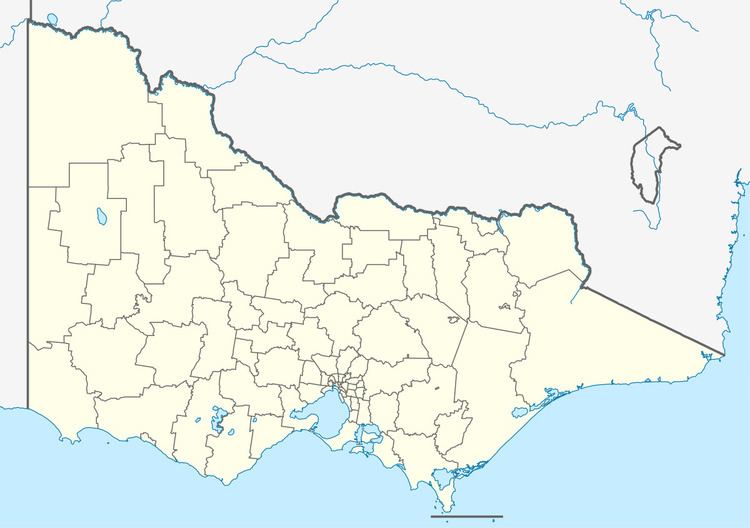Population 2,161 (2011 census) Postal code 3168 | Postcode(s) 3168 Area 80 ha Local time Monday 8:09 PM | |
 | ||
Weather 24°C, Wind SE at 18 km/h, 62% Humidity Federal divisions Division of Bruce, Division of Chisholm | ||
Notting Hill is a suburb in Melbourne, Victoria, Australia, 19 km south-east of Melbourne's central business district. Its local government area is the City of Monash. At the 2011 Census, Notting Hill had a population of 2,161.
Contents
Map of Notting Hill VIC 3168, Australia
History
Its traditional centre is on Ferntree Gully Road. The area is more a plateau than a hill, and is the site of two local water storages. A settler, Thomas Wilkinson, is generally accepted as giving the area its name because of his association with Notting Hill in London. He was a carrier between Oakleigh and Ferntree Gully and in the late 1870s opened a refreshment stop at Notting Hill, 4 km. from Oakleigh.
Notting Hill Post Office opened on 4 April 1887 and closed in 1975.
Ferntree Gully Road was the main thoroughfare between Mulgrave shire and Oakleigh, and Notting Hill attracted a relatively high density of farms. In 1920 there were dairy and poultry farms and market gardens, and the families agitated for a school which was finally opened in 1927. The school had an active Young Farmers' Club with livestock kept in the school grounds, and in 1937 was judged Victoria's best Young Farmers' Club. Notting Hill Primary School was closed in the mid 1970s with Students transferred to the newly built Monash Primary School The shire transferred its offices from Oakleigh to Notting Hill in 1920, where they remained until 1955 when the growing area of Glen Waverley was the site chosen for larger offices.
The residential area of Notting Hill (formerly Clayton North, Postcode 3168) consists of some 700 houses, bordered to the north and west by Ferntree Gully and Blackburn Roads, and to the south and east by factories. The development, Westerfield Estate, was built by A.V. Jennings as their first ‘planned suburb’, with no through roads, and easy pedestrian access to shops and schools. The first houses went up in the late 1950s. The small shopping strip on Westerfield Drive originally consisted of a Milk Bar, Butcher, small Supermarket, Green Grocer, Hairdresser and Chemist. As of 2012 only the Milk Bar remains, the remaining shopfronts are now small business offices.
Monash High School (later Secondary College) was originally opened in 1965 on the grounds of Notting Hill Primary School, moving to a permanent location at the corner of Duerdin and Nantilla Road. The Community funded Westerfield Kindergarten was opened in the late 1960s. Monash Primary School was constructed in mid 1970's to replace the largely portable classroom Notting Hill Primary School. From the early 1960s Monash University has adjoined the southern boundary of Notting Hill, and in the 1970s the Rusden Teachers College (later a Campus of Deakin University) was built on the eastern boundary of the estate.
Present
The Notting Hill Hotel remains a prominent landmark, being established in 1891; it is frequented by nearby university students and locals of Notting Hill. The owner, Kath Byer, ran the establishment until her death on 15 November 2010 and did so since 1936 when she bought the business with her husband Sidney (Lofty) Byer. Much of Notting Hill is occupied by industrial premises, a large drive-in hardware superstore and the Monash Business Park.
The heart of the suburb is the residential estate. The community here has been renewed in recent years by the arrival of many young families and students. A comparison of the 2001 and 2006 Census returns for Notting Hill shows a rapid increase in the young adult population, and an increasingly diverse population in ethnic terms. Residents have been brought together as a community by their collective opposition to the closure of all of the educational facilities in and around the estate: the Rusden campus in 2002, followed by the kindergarten in 2004, and then both state schools in 2005 and 2006. Residents formed the Notting Hill Community Association to fight the closures of these institutions and the ugly developments proposed to replace them. They have won several battles, but the struggle continues. Monash City Council has responded to the Association’s concerns for loss of local facilities by refurbishing the kindergarten site for use by the community. The Notting Hill Neighbourhood House was opened by the Governor of Victoria, Professor David de Kretser, on Saturday 28 July 2007.
Industry
The Natural Confectionery Company, which has been making lollies and sweets for over 60 years, is based in Notting Hill.
Musashi Foods also has its headquarters in the area.
Tomax Logistics, an international freight and customs business which has been in operation since 1987, has its global headquarters in Notting Hill.
Optiscan Imaging is based in Notting Hill. It focuses on research and development of optical products for medical use.
